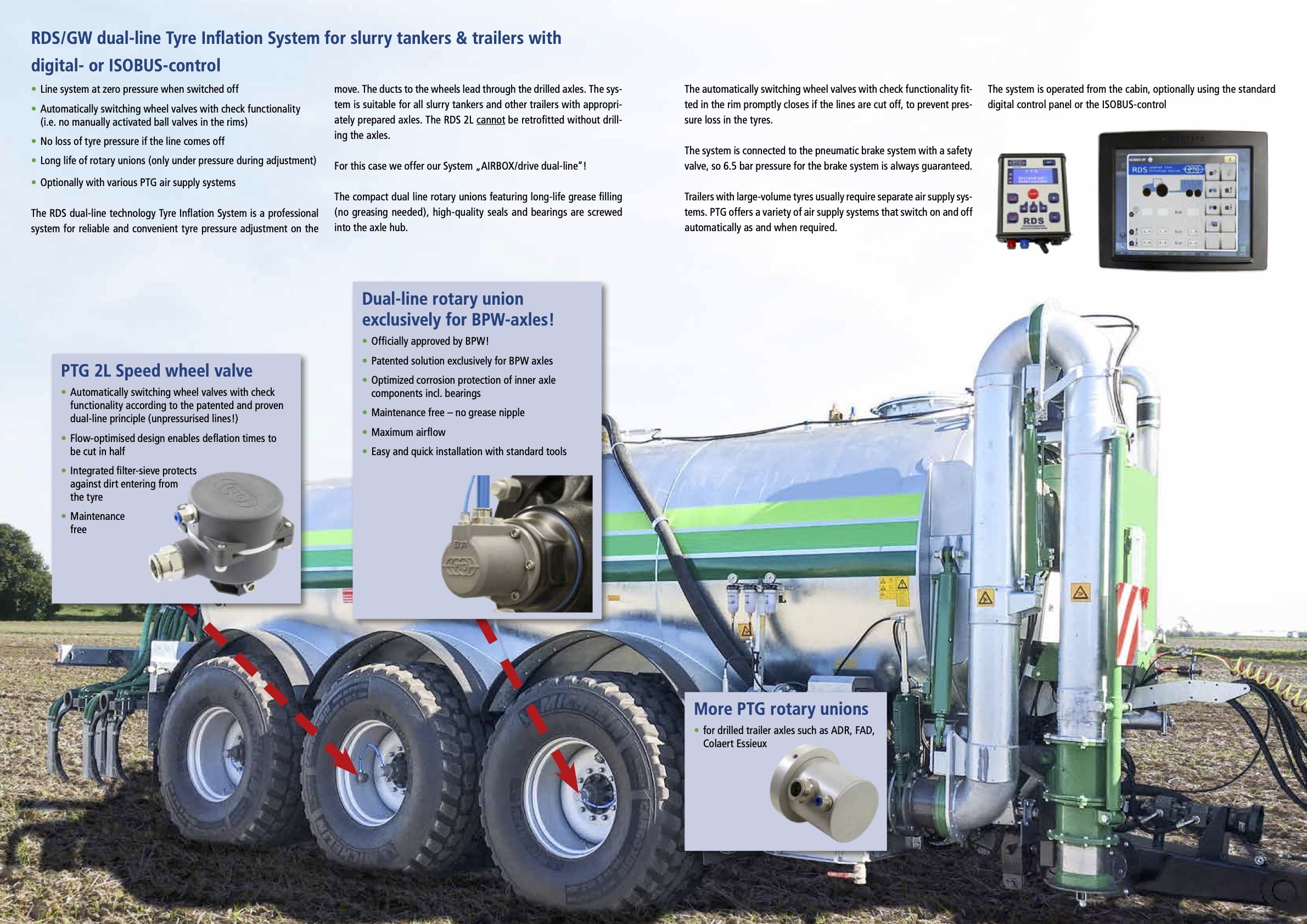
In principle, the AIRBOX/drive 2 line technology works by transferring air from a stationary component (stator) to a rotating component (rotor). For this process to work, pressure-resilient gasket seals are installed in the stator that in interacting with the rotor cause annular channels through which the air pressure flows, of course, also while the vehicle is moving.
The rotary joint is screwed onto the wheel studs concentrically to the middle axle using a fitting stirrup. Rotor and stator are embedded lined up with one another. Both a large line and a small control line rotate synchronously with the rotor and are led to the tire valve.
In the rim, a Wheel valve with check functionality is installed that will immediately close in the event a line tears and will keep the tire from losing pressure.
Due to the large volume of the tires on the vehicle, the use of separate/additional air supply systems is usually necessary. PTG offers various air supply systems that turn on and off automatically as needed.
The rotary joints and the entire air line system at the front and rear axles are pressurized only during an active control cycle. The patented two-line principle ensures that after every pressure change the tire is closed off and all transfer units (including gasket seals) are depressurized, thereby sparing the system from unnecessary wear. This technology also sees to it that the tire loses no air in the event of a leak in the regulating system or a break in the line, thereby guaranteeing increased safety.
The air lines run to the tire over the fender through a telescopic tube and are led to the middle of the wheel. Using the telescopic tube, the clearance to the side of the rotating wheel can be individually adjusted.
The large line and the control line are connected to the rotary joints using quick-action couplings so that they can be easily removed when not in use and placed on the fenders in dummy couplers.
Operating the system is done from the cab and can be done with either digital or isobus control
311 Ingersoll St S,
Ingersoll, Ontario N5C 3R5
Canada
(226) 387-0054